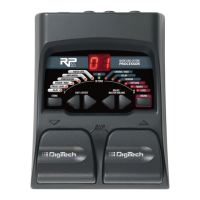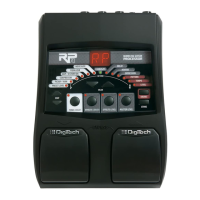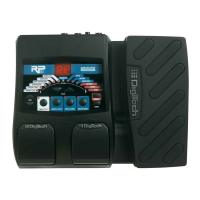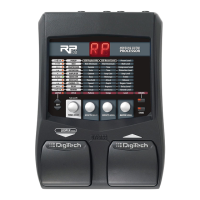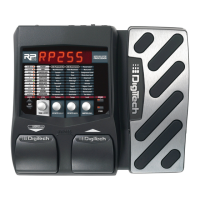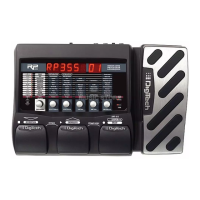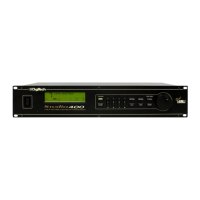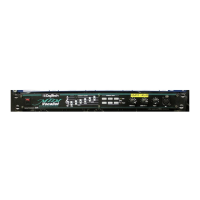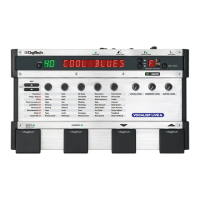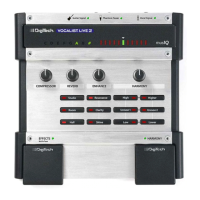Ambience, or reverberation, is produced when sound energy is reflected off room surfaces and objects. Using reverb in recorded program
material gives the listener a sense that the material is being performed in an actual room or hall. It is this similarity to actual acoustic spaces
that makes reverberation a useful tool in recorded music. Reverb Parameters and their functions are as follows:
Reverb Turns the Reverb effect on or off.
Type Allows you to choose your ambience or setting you want to use. There are ten available type settings:
CL=Club HA=Hall
St=Studio Ch=Church
ro=Room Ar=Arena
PL=Plate Sp=Spring
gA=Garage
Level Controls the amount of reverb signal to be mixed in with the dry signal. Ranges from 0 to 99.
Decay Time The amount of time it takes for the Reverb to fade to inaudibility. Ranges from 1 to 10.
The RP-3’s programmable Speaker Cabinet circuitry allows you to use it in both recording and live situations without lugging heavy amps
and/or cabinets around. Just connect the RP-3’s outputs to a mixing console and kick in the Speaker Cabinet. Parameters are as follows:
Cabinet Turns the Cabinet Emulator on or off.
Type Selects the tonal characteristics of the simulated cabinet. There are 9 different cabinet types; 1 being the
brightest and 9 being the darkest.
Note: When headphones are plugged in, the Speaker Cabinet Emulator is engaged globally on all programs. This will affect the
sound at the left and right main outputs.
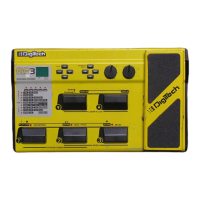
